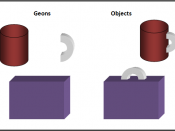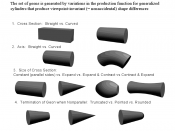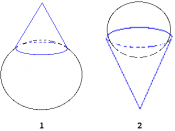5/12/2005
Describe the Recognition-By-Components (Geon) theory of object recognition and discuss its strengths as a theory of object recognition
Atkinson et al (2000) described object recognition as deciding the meaning of an object; it is described as being essential to survival, as if we do not know what an object is, we cannot react to it in an appropriate way. For example, once we realize that the object in front of us is a crocodile, we can react in the appropriate way by leaving the area very quickly. Object recognition also stops us from reacting in an inappropriate way, such as petting the crocodile. There are three major goals of perception; recognition, localization, and object constancy. "Perceptual constancy" is explained as "keeping the appearance of objects constant even though their impressions on the retina are constantly changing" (Atkinson et al, 2000), while "spatial localization" is also important to our survival, and refers to determining where visual objects are located (Atkinson et al, 2000).
Here we will be focusing on a specific theory of object recognition, Irving Biederman's Recognition-By-Components theory.
Biederman's (1987) Recognition-By-Components (RBC) theory of object recognition reasons why objects which have changed in size or orientation can still be identified. It also explains why some objects which have been somewhat degraded or impaired can be recognised. The main proposal which RBC identified was that objects consist of components known as geons (geometric icons). Biederman suggested that there are around thirty-six different examples of geons, (1990), some examples of which are wedges, arcs, spheres, cylinders, and blocks. Biederman (1987) estimated that just these thirty-six different types of geons could produce millions of exclusive objects. When identifying an object, it is done identifying the constituent geons of the object, followed by the interrelations of the object, which include aspects...


